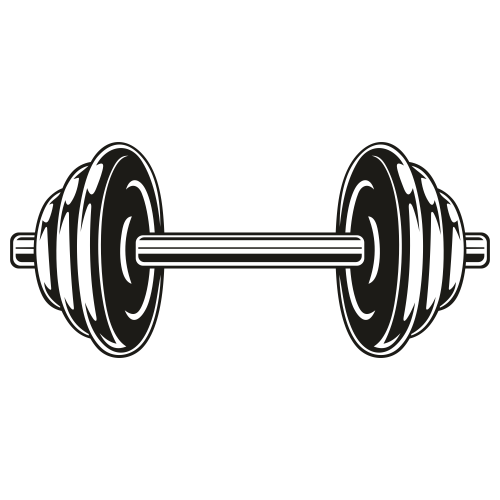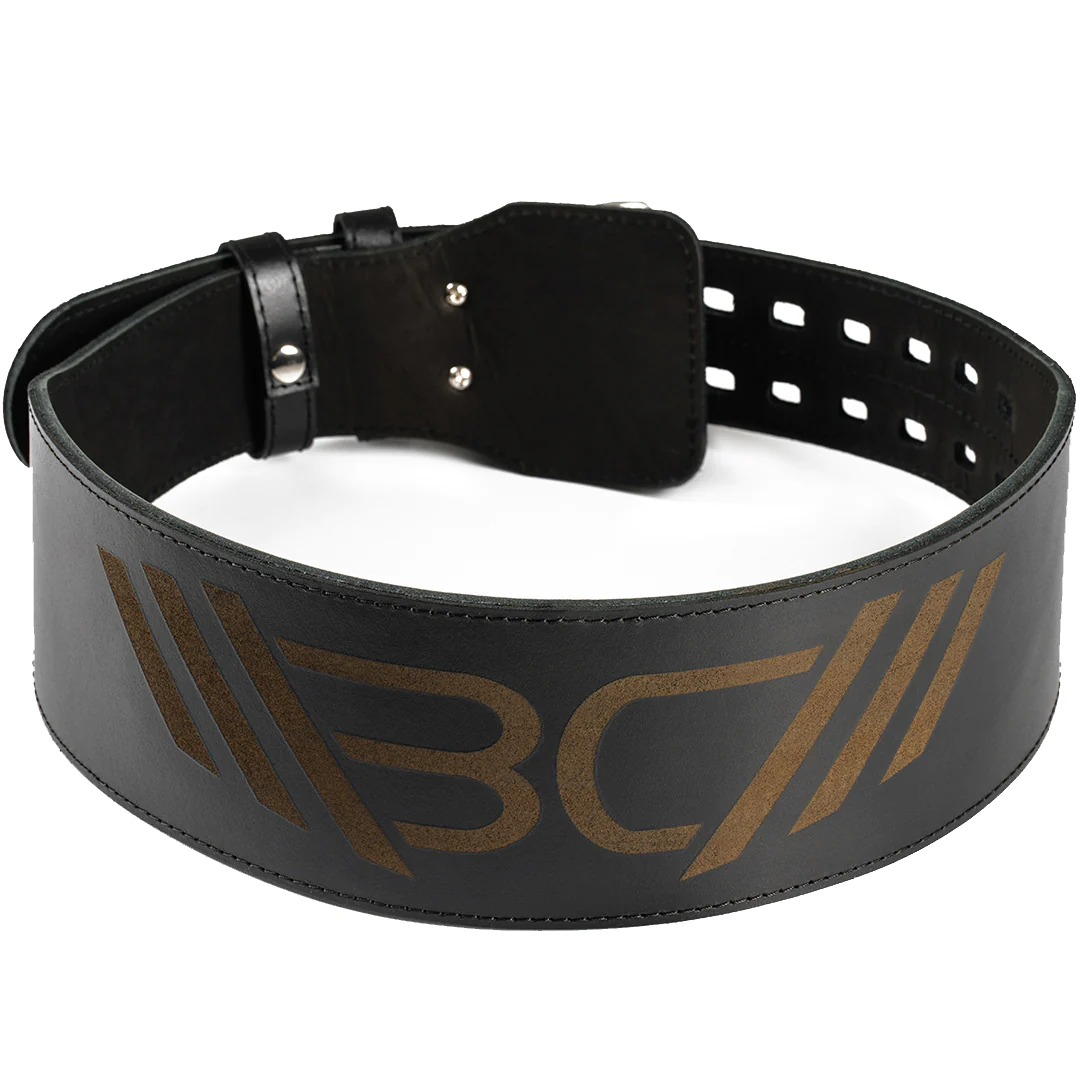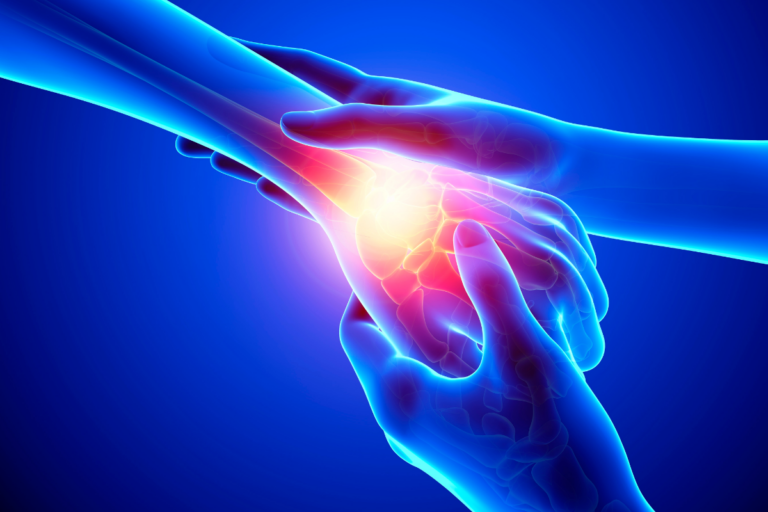Deadlift Starting Position: 8 Checkpoints to Pay Attention To
The deadlift isn’t an easy exercise to conquer, but by achieving the correct deadlift starting position, you’ll be well on your way to a successful lift. Numerous benefits can be seen with weightlifting, but it’s vital to have good form and focus to lift safely and effectively. If you’re wondering ‘where should you feel a deadlift’, you’ve come to the right place as we’ll talk in-depth about form and starting positions further in this article.
So, what’s a deadlift starting position?
A conventional deadlift starting position entails having shoulder-width grip, placing the bar over the midpoint of the feet, touching shins to the bar, adopting a below-parallel hip position, keeping the chest up, and breathing intentionally. The back must remain straight and neutral with the head facing forward without neck strain.
What is The Deadlift Starting Position and Why is it Important?
Deadlifting is an exercise many wish to complete, but without proper form, injuries can happen. It can take several sessions to achieve ideal deadlift form, and this time not only invests safety into your workouts, but can also minimize injury risk, and help you engage the correct muscles to lift more effectively.
Deadlift starting position can change and adapt depending on the deadlift variation being executed. Before loading the bar and smashing out a heavy set of deadlifts, it’s a wise move to first get familiar with hip hinging, and strengthen the key muscles used when performing the exercise. This is a particularly good decision for beginners who may not have spent adequate time practicing deadlifts and perfecting their form.

Getting the body in the correct starting position for deadlifts means you’ll be on the way to continuing into a successful lift. A clean vs deadlift starting position is similar, but there are some key differences to note. In a conventional deadlift, the hips need to be higher and the shoulders should be set slightly further back.
8 Pointers of Correct Starting Position in the Deadlift
The correct starting position for deadlifting can be broken down into a few simple steps. Walking through these steps while you’re gearing up to start your set will ensure you don’t forget any crucial elements of the deadlift starting position.
- Shoulder-width grip
- Placing the bar over the midpoint of the feet
- Touching your shins to the bar
- Adopting a slight below-parallel hip position
- The back must remain straight
- Head facing forward with no neck strain.
- Chest up
- Hold Breath
Now you are ready to lift!
Let’s dive into every aspect.
1. Shoulder Width Grip
Decide whether you’re using double overhand, hooked, or mixed grip, and grip the bar leaving a shoulder-width gap between each of your hands. To find the optimal hand position for your body, aim for your arms to be slightly outside of your knees and below your shoulders when you grip the bar. It’s also possible to utilize equipment such as lifting hooks or straps to aid your hands and wrists.

Pro Tip:
Varying the grips you use for deadlifting can be beneficial, as a split or mixed grip can lead to muscular imbalances if the same hands are used in the same positions frequently. Switch things up and try different grips for deadlifts such as double overhand or hook grip.
Our WBCM weightlifting straps Lasso Pro can give you extra support if grip strength is something you’re struggling with in the gym. Our one-size-fits-all straps are high-quality and versatile for use with various exercises. They are particularly useful when tackling heavy deadlifts where your grip strength struggles but you still want to achieve the lift.

Cotton Lasso Lifting Straps Pro
Enhance your lifting experience with Warm Body Cold Mind lasso lifting straps designed for durability and comfort.
2. Bar Over Mid Point of Feet
With the bar positioned over the midpoint of the feet, it ensures the weight can be evenly distributed when the bar is lifted. This means the weight of the bar doesn’t go too far forward towards the toes or back towards the ankle.
3. Shins to the Bar
Bringing your shins so they lightly touch the bar helps maintain a straight bar path where you aren’t leaning far forward and straining your lower back because the bar is too far away from your body. As you straighten yourself to a standing position in the deadlift, the knees should be out of the way of the bar enough so you don’t collide with them on the way up.
4. Hip Position
Take a hip-width stance with your feet and place them underneath the bar so it cuts over the middle point of your feet. The hips should move at the same time as your torso, from the initial position of sitting backward to shifting forward as the deadlift progresses.
5. Straight Back
The back must remain in a straight position for the entirety of the deadlift, without the shoulders rolling forward or the lower back being curved. Maintaining a straight back means the core and back are correctly engaged to support the body through the movement without any stress or strain from poor trunk positioning.
6. Head Positioning
Your head should remain straight, forward, and slightly down which should help keep your neck and spine aligned throughout the movement. When the bar has risen off the ground, it should move in a straight line to full extension until it’s returned to the floor and your head should do similar, so avoid looking around and moving your head and neck during the lift.
Following a straight bar path keeps the exercise safe and efficient, while also ensuring you’re controlling the bar using all of the necessary muscles in the body.
Subscribe!
Get useful tips, expert insights, and in-depth analysis of training programs & nutrition plans to get the most out of your performance.
7. Chest Up
The chest should remain up in a deadlift, as it helps keep the shoulders from folding forward and the back from becoming rounded. It’s essential to not force the chest too far up and out as this can lead to the lower back becoming curved. When you bring your chest up, ensure your back is flat and straight, with the shoulders sitting back and engaging as you pull the slack out of the bar.
8. Breath
Breath is another vital component to get right in a deadlift starting position. When you are set up for the movement, ready to begin lifting the bar off the ground, brace your core, taking a deep inhale. Keep hold of the inhale until you reach the full deadlift position, exhaling as you return the bar to the floor.
There’s a lot to remember when deadlifting, especially if you’re a beginner, but cycling through the pointers we mentioned above should help you avoid common mistakes with the deadlift starting position. These mistakes include gripping the bar too wide or too narrow, not engaging the core and straightening the back, and leading the lift with the hips.
How To Measure Best Grip Width, Hip Height, Stance Width, and Foot Direction for Deadlifts
Finding the optimal position for deadlifting is essential. Although there are some standard pointers to follow, it’s always best to find the best position for your body, taking into account your height, flexibility, and capabilities.

Grip Width: Once you’ve adopted a shoulder-width apart stance, your hands should be placed just outside of your knees. The legs and arms shouldn’t collide during the lift. If this happens, you may need to widen your grip slightly.
Hip Height: The optimal hip position for deadlifts requires the hips to be in a slightly below-parallel position higher than the knees but not too high that you feel like you’re about to fall forward.
Stance Width: For the conventional deadlift, the stance width should be shoulder width apart, but this can vary between different deadlift variations such as sumo deadlifts or RDLs.
Foot Direction: The feet ideally need to be facing outwards with a slight angle. This helps ensure the knees don’t turn inwards, instead maintaining an outwards angle from the start to the end of the rep.
Starting Position in Deadlift Variations
Different variations of deadlifts have various starting positions and form requirements. Therefore, if you’re incorporating numerous types of deadlifts into your training, it’s beneficial to know how to perform each of them with correct form and starting positions.
1. Romanian Deadlift Starting Position
The starting position for a Romanian deadlift isn’t too different from a conventional deadlift starting position but there are some key differences to note. As with all types of deadlifts, the back should remain straight, and the core engaged from the beginning to the end of the exercise.
- Take a grip width of shoulder to hip-width apart, and a stance that also places the feet hip-width apart. A Romanian deadlift involves keeping the legs stiffer than a conventional deadlift, but it’s essential to still hold a slight soft flexion in the knees.
- Hinge the hips but to a smaller degree when compared with conventional deadlifts, as Romanian deadlifts target the hamstrings more.
- Head positioning should always be straight with a small downward angle, and the back should remain straight and engaged with the core braced and a deep inhale taken before beginning the lift.
- When the bar is lowered, you should feel the hamstrings engaging as you bring the bar below your knees. It’s essential to not bring the bar too low, as this can make it difficult to return to the starting position if you do not have the flexibility to extend further.

Pro Tip:
Varying the exercises you perform in the gym is a great way to keep your workouts fresh, and use your muscles in different ways. Changing up your routine and introducing new deadlift variations can help give you a boost of motivation and focus to keep working towards your goal.
2. Sumo Deadlift Starting Position
Sumo deadlifts are ideal for activating the muscles in the inner and outer thighs, but the sumo deadlift starting position has a few differences from the conventional deadlift. The main and most noticeable difference is the widened stance with sumo deadlifts which involves placing the feet at a wide stance, beyond shoulder or hip-width apart.
- Place the feet at a wider stance than a conventional deadlift starting position, outside of the hips.
- The hands should grip the bar at a shoulder-width distance apart, and the head should stay in a neutral, straight position throughout.
- It’s essential to keep your knees facing outwards for the entirety of the movement, though the widened stance should help maintain an outward knee position and prevent them from rolling in.
For added comfort and support when deadlifting, our WBCM leather weightlifting belt is a great piece of equipment to introduce into your sessions. Dual holders, 10 adjustment holes, 6 mm thickness, and A-grade leather, all ensure the belt will remain useful, durable, and effective for all of your deadlift sessions yet to come.

Enhance your strength training with Warm Body Cold Mind leather weightlifting belt providing exceptional support and durability.
3. Single Leg Deadlift Starting Position
Single leg deadlifts require balance and coordination, making them an advanced exercise with impressive benefits when performed correctly. As suggested in the name, a single leg deadlift requires the use of one leg at a time, making it a unilateral exercise. Studies have shown that including unilateral exercises in a workout routine can have benefits such as improved unilateral jump performance.
- Begin the exercise by adapting a stance with the feet hip-width apart and in a controlled manner, lean forward with your hips moving backward.
- Take a deep inhale, engage the core, and raise and extend one leg behind you, shifting your body weight to the stationary leg on the ground. If you’re using a single dumbbell or kettlebell, hold it on the opposite side of the leg you will be lifting off the ground.
- Keep the weight as close to your legs as you can while lifting, as this will reduce the stress and strain on your back.
4. Deficit Deadlift Starting Position
A deficit deadlift has a starting position that’s pretty much the same as a conventional deadlift. The main difference with a deficit deadlift is that the feet are raised anywhere from a couple of inches to 4 inches in height by using weight plates, a mat, or similar.
- Position yourself with the same grip width and leg stance as a conventional deadlift, raised by a mat or similar which increases the range of motion.
- Set the shoulders back, the chest up, and brace your core, taking an inhale before proceeding with the lift.
- It can be tempting to lean back at the top of the movement, but this act of hypertension can strain the back and potentially lead to injury. Aim to be controlled from the start to the finish of the exercise, and lower the weight you’re lifting so you can perfect your form and keep stable.
5. Trap Bar Deadlift Starting Position
Deadlifting using a trap bar has a different starting position, but this is mainly due to using a different type of barbell. Deadlifting using a trap bar can help keep your back straight and torso upright, but there are still a few considerations to think about.
- In contrast to a conventional deadlift, you need to place your hands on the handles built into the trap bar at either side of your body.
- Step inside the center of the trap bar, and once you’re comfortably in the middle, you can set your body up ready to lift.
- Grip the handles with a neutral grip and shift your hips backward, maintaining a bend in the knees until you straighten the body into the lift.
- Keep your head and neck neutral, engage the upper back and core, and push through the legs into the feet and the floor as you extend upwards.
Deadlifting recruits various muscles around the body, and wearing a belt can help support your trunk while you surpass goals and reach new PBs. Our WBCM nylon weightlifting belt is the perfect addition to your resistance training days as it is comfortable and supportive on the lower back, utilizing premium nylon and a high-quality metal clasp for ultimate durability and longevity.

Discover the strength of the Warm Body Cold Mind nylon lifting belt. Lightweight and durable, it provides optimal support for your workouts.
Is Deadlift Starting Position the Same as Clean?
The deadlift starting position may at first look the same as a clean starting position, but there are some fundamental differences between the clean vs deadlift starting position. Shoulder positioning is further back for a conventional deadlift which helps the body maintain a rigid, upright position throughout the lift.
The bar path when deadlifting should be as close to a straight line as possible, lifting the weight to hip height and returning the barbell to the ground. When performing a clean, the bar tends to move backward toward the body and is followed by acceleration to bring the bar upwards to the shoulders.
| Deadlift Starting Position | Clean Starting Position |
|---|---|
| Shoulders should be set further back to help maintain a rigid trunk. | Shoulder positioning is over the bar, with a forward lean. |
| Optimal straight bar path from the moment the barbell is lifted off the floor until it is returned back again. | Bar path is near-straight with slight fluctuations when the bar is initially lifted and brought up to the shoulders. |
| A deadlift stop at the hips. | A clean continues after ricochet at power position. |
Conclusion
Having a correct deadlift starting position is key for kicking off the exercise in the best way, using the right muscles, and setting yourself up for an effective lift. Taking the time to review your starting position for the different deadlift variations can help you focus on engaging your muscles and proceeding with a safe, successful deadlift.
What pointers do you use for your deadlift starting position? Let us know in the comment section below.
References:
- Katey Davidson, MScFN, RD, CPT, “14 Benefits of Strength Training”, Healthline, https://www.healthline.com/health/fitness/benefits-of-strength-training (Accessed March 16 2024)
- Edit Strömbäck, MSc, Ulrika Aasa, PhD, RPT, and Lars Berglund, PhD, RPT, “Prevalence and Consequences of Injuries in Powerlifting: A Cross-sectional Study”, Orthopedic Journal of Sports Medicine, https://journals.sagepub.com/doi/full/10.1177/2325967118771016 (Accessed March 16 2024)
- Kevin D Camara, Jared W, Coburn, Dustin D Dunnick, Lee E Brown, Andrew J Galpin, Pablo B Costa, “An Examination of Muscle Activation and Power Characteristics While Performing the Deadlift Exercise With Straight and Hexagonal Barbells”, National Center For Biotechnology Information, https://pubmed.ncbi.nlm.nih.gov/26840440/ (Accessed March 16 2024)
- Rafael F Escamilla, Anthony C Francisco, Andrew V Kayes, Kevin P Speer, Claude T Moorman 3rd, “An electromyographic analysis of sumo and conventional style deadlifts” National Center For Biotechnology Information, https://pubmed.ncbi.nlm.nih.gov/11932579/ (Accessed March 16 2024)
- Kai-Fang Liao, George P. Nassis, Chris Bishop, Wei Yang, Chao Bian, and Yong-Ming Li, “Effects of unilateral vs. bilateral resistance training interventions on measures of strength, jump, linear and change of direction speed: a systematic review and meta-analysis”, National Center For Biotechnology Information, https://www.ncbi.nlm.nih.gov/pmc/articles/PMC9331349/ (Accessed March 16 2024)
- All photos are made by WBCM Media team.
Author: Sergii Putsov
PhD in Sport Science, Olympic weightlifting, Strength & Conditioning coach and fitness expert
Sergii Putsov is a professional weightlifter with over 20 years of experience and multiple national medals. He was a member of the National weightlifting team, competing in the 94 kg weight class. Sergii holds a master’s degree in Olympic & Professional Sport Training and a Ph.D. in Sport Science. After his athletic career, Sergii transitioned into coaching and is now responsible for designing training programs, writing blog articles, providing live commentary for international weightlifting competitions, and hosting sport and fitness seminars worldwide.











